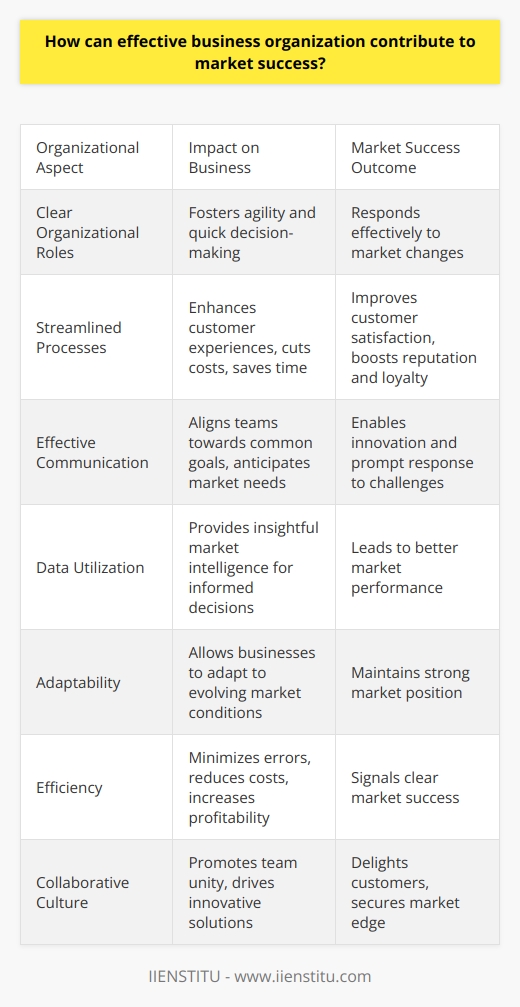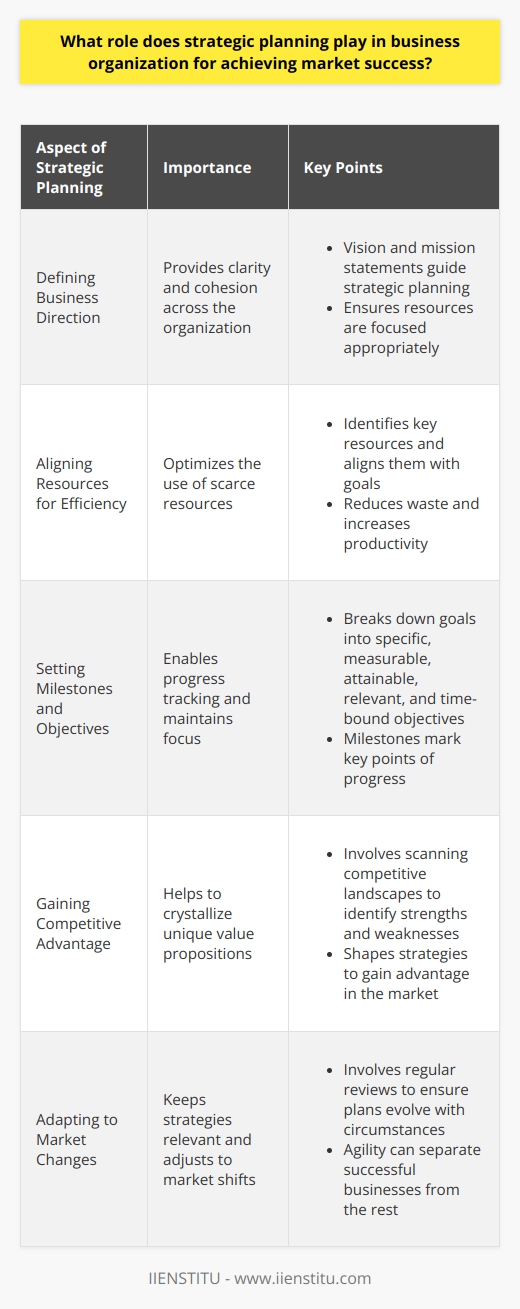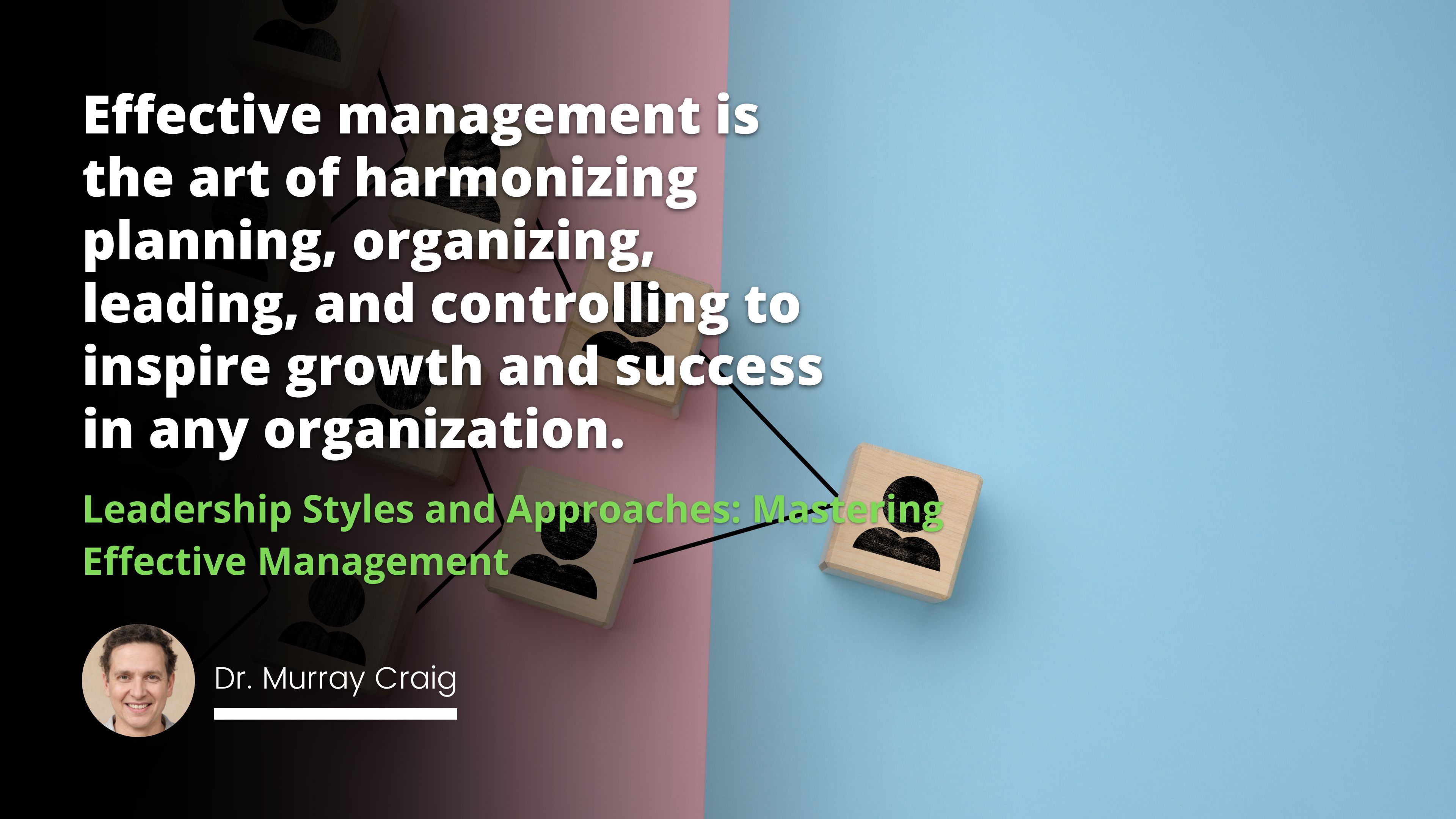
In the competitive landscape of modern commerce, a well-designed Business Organization Strategy is fundamental for achieving Market Success. The complex interplay between organizational architecture and market performance cannot be overstated. A business's ability to organize and reorganize elements such as hierarchy, process workflows, and cultural attributes significantly contributes to its capacity to adapt, innovate, and ultimately sustain long-term prosperity. This article explores the intricate relationship between organizational structures and strategies, and their pivotal role in the success of businesses striving to carve their niches in today's market landscape.
The Role of Business Organization in Market Standings
Correlation between Business Organization and Market Success: Business Organization is not merely about internal structuring but is crucial for establishing a foothold in the market. The correlation between organizational effectiveness and market success has been well-documented through various statistical evidence and case studies. A well-organized business is likely to respond more swiftly to market changes, making it more competitive. This competitive advantage stems from improved decision-making, efficient resource allocation, and superior customer satisfaction.
Components of an Effective Business Organization Strategy: The effectiveness of a Business Organization Strategy hinges on several critical components. A clear hierarchy and defined roles within an organization facilitate accountability and streamline decision-making processes. Furthermore, streamlined processes and systems contribute significantly to overall efficiency, reducing redundancies and bottlenecks. An adaptive organizational culture, one that not only supports existing strategies but also embraces change, is indispensable for businesses to remain relevant.
Strategies for Overcoming Organizational Challenges: Effective organizational strategies also encompass the management of change. Alterations to the status quo, such as integrating new technologies or restructuring teams, require meticulous management to avoid disruptions. Encouraging innovation and maintaining flexibility in business practices can help companies navigate through changing market conditions. Moreover, fostering a culture of open communication and collaboration can enhance problem-solving and contribute to a more dynamic business organization.
Designing a Business Structure for Success
Analysis of Different Business Structures: The foundation of any Business Structure Success rests upon selecting the appropriate form of business entity. From sole proprietorships to partnerships, corporations, and LLCs, each has inherent advantages and limitations that can influence a business's success trajectory. The determination of the most suitable business structure is a critical decision that may affect legal liability, tax obligations, and investment attractiveness.
Aligning Business Structure with Long-term Goals: When aligning a business structure with long-term goals, it's imperative to consider scalability and flexibility. The chosen structure should support growth and adapt to the company's evolving needs. Tailoring the structure to meet industry-specific requirements and market demands is a strategic approach that can lead to substantial returns and long-term viability.
Case Examples: Organizations that Refined Their Structure for Success: Historical and contemporary case studies serve as rich resources for studying the impact of structural adjustments on an organization's success. A myriad of organizations have gone through profound restructuring to improve their market standing, illustrating the significance of agility and forward-thinking in organizational strategy. These success stories provide tangible lessons for businesses aiming to recalibrate their structure in line with market evolution and internal growth trajectories.
The Effect of Organizational Practices on Business Performance
Importance of Effective Leadership in Organization: Leadership is the central component of any organizational strategy, with leaders tasked with setting the vision and direction for the entire business. Their decisions, leadership styles, and the values they espouse trickle down to influence every aspect of the organization's operations and outcomes. Effective leaders can inspire and guide their teams, translating organizational goals into actionable plans that yield results.
Organizational Culture and Its Impact on Employee Performance: A robust organizational culture is a vital ingredient for enhancing employee performance. There is a direct correlation between the health of company culture and the level of employee engagement and satisfaction. To foster a positive and productive workplace culture, businesses must cultivate an environment that supports collaboration, recognizes achievement, and aligns individual aspirations with organizational goals.
Innovation in Organizational Strategy: Lastly, innovation should be an integral component of an organizational strategy, especially in a technology-driven world. Embracing advancements and incorporating them into the business model is necessary for staying competitive. Several businesses have successfully navigated market changes through innovation, employing new technologies and practices that have been transformative, leading to increased efficiency and reaching new markets.
Organizational Tools and Technologies for Enhanced Efficiency
Technological Solutions for Business Organization: Innovative tools and technologies are reshaping how businesses organize and execute their operations. Project management software, collaboration platforms, and online courses designed for professional improvement are just some examples of how technology can streamline and enhance organizational efficiency. Adopting customer relationship management (CRM) systems can also play a significant role in managing interactions with clients and improving overall customer experience.
Measuring Success: KPIs and Performance Metrics: In addition to implementing technological solutions, measuring and monitoring success through key performance indicators (KPIs) and performance metrics is essential. Analytics employed judiciously can provide deep insights into organizational efficiency and areas needing improvement. The establishment of clear KPIs also aids businesses in setting goals and sustaining continuous advancements.
Conclusion
This exploration highlights how a strategic approach to business organization is intrinsically linked to Market Success. Recognizing the pivotal role of organizational dynamics and continuously evolving these structures to meet market demands ensures that businesses remain competitive and successful. As the commercial environment changes, so too must the strategies underpinning business organization. Investing time, resources, and intellectual capital into perfecting a Business Organization Strategy is not just beneficial; it is imperative to thrive in a rapidly shifting marketplace.
Most Searched Keyword: Principles Of Management And Organizational Behavior For Effective Leadership
References and Further Reading
For readers interested in delving deeper into the concepts discussed here, a range of academic articles, books, and MBA programs offer further insights into effective business organization strategies. Whether one is seeking theoretical frameworks or practical applications, the literature on this subject is elaborate and invaluable. Professionals seeking tailored advice may also consider enrolling in specialized courses or consulting with industry experts to best inform their strategic decision-making.
Frequently Asked Questions
What are the principal elements of successful business organization?
Key Aspects of a Thriving Business Organization
Strong Leadership
Leaders remain pivotal in navigating businesses. They guide, inspire, and rally teams. Effective leaders set clear visions. They also instill values and cultivate cultures.
Strategic Planning
Planning charts a business's course. It defines goals and outlines achieving them. Organizations benefit from adaptable, forward-thinking strategies.
Organizational Structure
An articulated structure ensures efficient functioning. Each role within the structure holds clear responsibilities. Coordination among different levels proves crucial.
Robust Financial Management
Financial health underpins organizational success. Regular monitoring of cash flows is essential. Sound financial practices safeguard against uncertainty.
Competent Workforce
Employees are a company's backbone. Recruitment focuses on skills and cultural fit. Ongoing training facilitates growth and innovation.
Customer-Centric Approach
Prioritizing customer needs fosters loyalty. A positive experience drives repeat business. Customer feedback shapes service improvements.
Efficient Operations
Process optimization enhances performance. Technology aids operational efficiency. High productivity stems from well-designed workflows.
Marketing and Sales
Effective marketing strategies attract customers. Sales convert interest into revenue. A synergy between the two amplifies results.
Adaptability and Resilience
The capacity to pivot confers a competitive edge. Resilience sustains businesses through challenges. An adaptable organization promptly responds to change.
Continuous Improvement
Organizations committed to improvement excel. They assess performance and adjust processes. Learning from both success and failure propels advancement.
Solid Risk Management
Anticipating risks allows for preparation. A risk management strategy mitigates potential damage. It maintains continuity in a crisis.
Corporate Social Responsibility
Social responsibility enhances reputation. Ethical practices attract discerning consumers. Commitment to social values reflects positively on the brand.
---
Organizations thriving in dynamic markets share these traits. They balance internal mechanisms with external demands. Success springs from a blend of these principal elements.

How can effective business organization contribute to market success?
Organizational Structure and Market Success
The Importance of Organizing Effectively
In the business world, organization can mean much.
It implies arranging the internal functions.
Effective organization connects to strategy.
It also addresses market demands.
Thus, it aids in achieving market success.
Clear Organizational Roles Foster Agility
Business roles need clarity for efficiency.
Employees benefit from well-defined responsibilities.
This clarity leads to quicker decision-making.
Agility in business responds well to market changes.
In turn, this agility contributes to success.
Streamlined Processes Enhance Customer Satisfaction
Processes within a business must run smoothly.
Simplified processes enhance customer experiences.
Efficient procedures cut costs and save time.
This operational efficiency can win market approval.
Improved customer satisfaction boosts reputation and loyalty.
Communication as Key to Market Success
Effective organization enhances internal communication.
Good communication aligns teams towards common goals.
Informed employees can anticipate market needs better.
They can innovate and respond to challenges promptly.
Thus, good communication oil the gears of success.
Data Utilization and Decision Making
Organized businesses manage data effectively.
This management gives insightful market intelligence.
Leaders make informed decisions with good data.
These decisions often lead to better market performance.
Adaptability to Changing Market Conditions
Markets always change; they evolve.
Organized companies can adapt to these changes.
Adaptability depends on a resilient structure.
With resilience, businesses maintain their market position.
Efficiency Reduces Errors and Costs
Organization can minimize mistakes.
Errors waste time and money.
Fewer errors translate to increased profitability.
High profits signal clear market success.
Collaboration and Organizational Culture
Effective organization promotes a collaborative culture.
Within this culture, teams blend their skills.
A united team stands strong in competition.
It drives the company towards innovative solutions.
Innovative solutions delight customers.
This delight often secures a market edge.
Conclusion: Organization Catalyzes Market Success
Good organization is not an end.
It is a means to achieving success.
Success in the market comes from various practices.
Yet, effective organization is fundamental among them.
An organized business experiences multiple benefits.
These benefits can thrust a business to market leadership.

What role does strategic planning play in business organization for achieving market success?
The Importance of Strategic Planning
Strategic planning anchors business organizations. It steers toward clear goals. It aligns resources with objectives. A solid strategic plan enables effective decision-making. Organizations anticipate change more easily. They become proactive rather than reactive.
Defining Business Direction
Vision and mission statements provide business direction. They answer the "why" and "what" of a business. These statements guide strategic planning. They ensure cohesion across the organization. Strategic plans set priorities. They focus energy and resources appropriately.
Aligning Resources for Efficiency
Resources are often scarce. Strategic planning ensures their optimal use. It identifies key resources. It aligns them with the company's goals. Efficiency is crucial for market success. Efficiency reduces waste and increases productivity.
Setting Milestones and Objectives
Goals break down into manageable objectives. Objectives are specific, measurable, attainable, relevant, and time-bound. Milestones mark key points of progress. These help maintain focus. They enable the tracking of progress. They keep the organization on course.
Gaining Competitive Advantage
Understanding market dynamics is essential. Strategic planning involves scanning competitive landscapes. It identifies competitors' strengths and weaknesses. This intelligence shapes strategies to gain advantage. Market success often depends on unique value propositions. Strategic planning helps to crystallize these propositions.
Driving Sustainable Growth
Sustainable growth is the goal. Strategic planning identifies growth opportunities. It assesses risks and returns. It determines the best paths for expansion. It keeps the long-term in mind. Short-term wins must not compromise future prospects.
Enhancing Decision-Making Quality
Decisions reflect strategic direction. Each choice must fit the bigger picture. This ensures consistency and purpose. Strategic planning improves decision-making quality. It offers a framework for evaluating options. It increases the likelihood of successful outcomes.
Adapting to Market Changes
Markets evolve constantly. Strategic planning involves regular reviews. It keeps strategies relevant. It adjusts to market shifts. Flexibility is key. Plans must evolve as circumstances do. This agility can separate successful businesses from the rest.
Improving Communication and Collaboration
Communication is foundational. Strategic planning clarifies objectives for all. When goals are clear, teams work better together. Collaboration requires common understanding. Strategic planning provides this platform. It fosters a unified effort.
Conclusion
Strategic planning is indispensable for market success. It offers direction, improves efficiency, and guides decision-making. It helps businesses adapt and grow sustainably. Without it, success is much harder to achieve. Strategic planning indeed plays a pivotal role in achieving market success.



